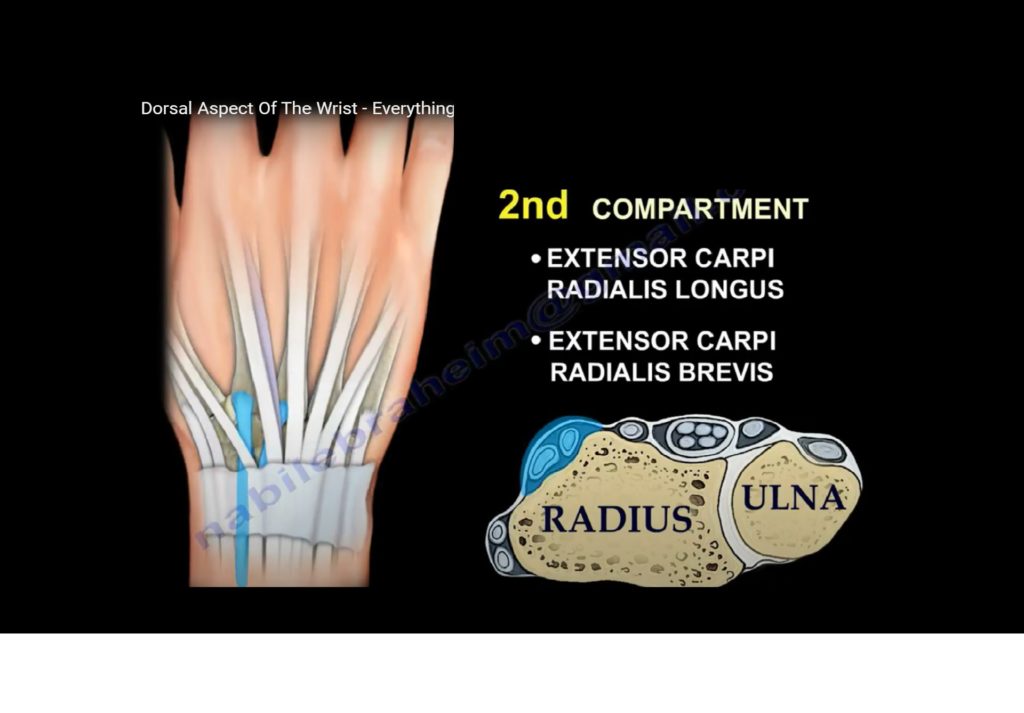
It can be followed distally where it is located deep to extensor digitorum communis at the level of the wrist. Unlike its anterior namesake, the posterior interosseous nerve does not directly lie on the interosseous membrane, but between the superficial (EDC, EDM and ECU) and deep (APL and EPL) muscle groups. This is the major motor division of the radial nerve, formed below the elbow joint and passing into the posterior compartment between the two heads of supinator. The crossover occurs just proximal to the wrist.Īxial anatomy extensor compartment with posterior interosseus nerve (N) centrally.Īlthough it is not particularly large, the main nerve in the extensor compartment is the posterior interosseous nerve (PIN).

It is clear that 1 and 2 are not optimally arranged and are going to have to cross each other to reach their ultimate destination. In the proximal forearm, the extensor compartments from radial to lateral are therefore 2, 1, 3, 4, 5 and 6. More distally, abductor pollicis longus will receive an additional component from extensor pollicis brevis (EPB) to complete compartment 1. The deep component contains abductor pollicis longus (APL) on the radial side of extensor pollicis longus (EPL), forming extensor compartments 1 and 3 respectively. In the posterior section, the superficial layer contains extensor digitorum (ED), extensor digiti minimi (EDM) and extensor carpi ulnaris (ECU) (extensor compartments 4, 5 and 6) ( Fig. 10.2 ), whose tendons will ultimately form extensor compartment 2. The muscles in the lateral compartment are brachioradialis, and more distally extensor carpi radialis longus (ECRL) and brevis (ECRB) ( Fig. In the extensor compartment, three separate layers are discernible: two posterior (superficial and deep) and one lateral. The anterior interosseous nerve and its accompanying artery are located between flexor digitorum profundus and flexor pollicis longus in close proximity to the interosseous membrane. Occasionally, the median nerve is also accompanied by a persistent median artery. The median nerve lies more centrally between flexor digitorum superficialis and profundus. Ulnar and radial nerves are accompanied by their corresponding arteries. The three principal nerve trunks, median, ulnar and radial, all lie in the anterior, though strictly the radial nerve is still in the lateral component of the posterior compartment, albeit in a very anterior location. The final member of the compartment, flexor pollicis longus (FPL), arises from the radius and lies alongside flexor digitorum profundus in the mid- and distal forearm.Īxial anatomy flexor compartment with median nerve (N) centrally. Overlying these are three muscles, flexor carpi ulnaris (FCU), palmaris longus and flexor carpi radialis (FCR) ( Fig. The two main muscles of the flexor compartment are flexor digitorum superficialis (FDS) and flexor digitorum profundus (FDP), which occupy the central part of the compartment and make up most of its bulk. Once the tendon is found, it can be followed proximally and its associated muscle located. The anatomy of the wrist and methods to remember tendon names are described in a later section. The tendons at the wrist are clearly separate from each and occupy well-recognized compartments. The easiest method to identify a particular muscle of the forearm is to begin at the wrist with its tendon. In the midforearm, the flexor compartment occupies the anterior part of the forearm the extensor compartment occupies the posterior and lateral part. It is made a little trickier, however, as the flexor and extensor muscles begin medially and laterally respectively and then rotate as they are followed distally. The anatomy of the forearm in one sense is as straightforward as the arm in that there are only two compartments, flexor and extensor, separated by an interosseous membrane.


 0 kommentar(er)
0 kommentar(er)
